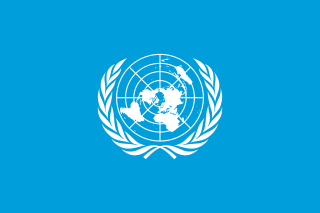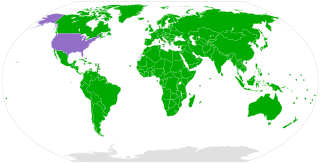The Cartagena Protocol on Biosafety to the Convention on Biological Diversity is an international agreement on biosafety as a supplement to the Convention on Biological Diversity effective since 2003. The Biosafety Protocol seeks to protect biological diversity from the potential risks posed by genetically modified organisms resulting from modern biotechnology.

The International Union for Conservation of Nature is an international organization working in the field of nature conservation and sustainable use of natural resources. It is involved in data gathering and analysis, research, field projects, advocacy, and education. IUCN's mission is to "influence, encourage and assist societies throughout the world to conserve nature and to ensure that any use of natural resources is equitable and ecologically sustainable".
This is an index of conservation topics. It is an alphabetical index of articles relating to conservation biology and conservation of the natural environment.

Conservation biology is the management of nature and of Earth's biodiversity with the aim of protecting species, their habitats, and ecosystems from excessive rates of extinction and the erosion of biotic interactions. It is an interdisciplinary subject drawing on natural and social sciences, and the practice of natural resource management.
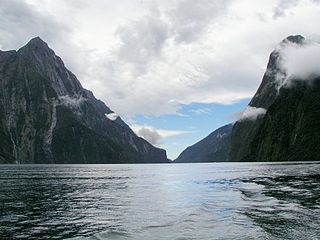
Marine protected areas (MPA) are protected areas of seas, oceans, estuaries or large lakes. These marine areas can come in many forms ranging from wildlife refuges to research facilities. MPAs restrict human activity for a conservation purpose, typically to protect natural or cultural resources. Such marine resources are protected by local, state, territorial, native, regional, national, or international authorities and differ substantially among and between nations. This variation includes different limitations on development, fishing practices, fishing seasons and catch limits, moorings and bans on removing or disrupting marine life. In some situations, MPAs also provide revenue for countries, potentially equal to the income that they would have if they were to grant companies permissions to fish.
The UN Environment World Conservation Monitoring Centre (UNEP-WCMC) is an executive agency of UN Environment, based in Cambridge in the United Kingdom. UNEP-WCMC has been part of UN Environment since 2000, and has responsibility for biodiversity assessment and support to policy development and implementation. The World Conservation Monitoring Centre was previously an independent organisation jointly managed by IUCN, UN Environment and WWF established in 1988, and prior to that the Centre was a part of the IUCN Secretariat.
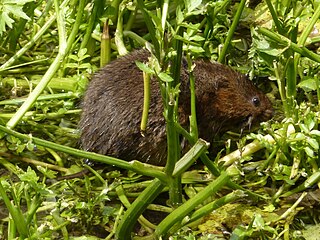
The United Kingdom Biodiversity Action Plan or (UK BAP) was the UK government's response to the Convention on Biological Diversity, opened for signature at the Rio Earth Summit in 1992. The UK was the first country to produce a national Biodiversity Action Plan. It was published in 1994 and created action plans for priority species and habitats in the UK that were most under threat so as to support their recovery.

The Environment Protection and Biodiversity Conservation Act 1999 is an Act of the Parliament of Australia that provides a framework for protection of the Australian environment, including its biodiversity and its natural and culturally significant places. Enacted on 17 July 2000, it established a range of processes to help protect and promote the recovery of threatened species and ecological communities, and preserve significant places from decline. The EPBC Act replaced the National Parks and Wildlife Conservation Act 1975.

A biodiversity action plan (BAP) is an internationally recognized program addressing threatened species and habitats and is designed to protect and restore biological systems. The original impetus for these plans derives from the 1992 Convention on Biological Diversity (CBD). As of 2009, 191 countries have ratified the CBD, but only a fraction of these have developed substantive BAP documents.

Papua New Guinea together with the West Papua region of Indonesia make up a major tropical wilderness area that still contains 5% of the original and untouched tropical high-biodiversity terrestrial ecosystems. PNG in itself contains over 5% of the world's biodiversity in less than 1% of the world's total land area. The flora of New Guinea is unique because it has two sources of origin. The Gondwana flora from the south and flora with Asian origin from the west, as a result New Guinea shares major family and genera with Australia and the East Asia, but is rich in local endemic species. The endemicity is a result of mountainous isolation, topographic and soil habitat heterogeneity, high forest disturbance rates and abundant aseasonal rainfall year-round. PNG boasts some 15-21,000 higher plants, 3,000 species of orchids, 800 species of coral, 600 species of fish, 250 species of mammals and 760 species of birds and 8 species of tree-kangaroos out of which 84 genera of animals are endemic. Ecosystems range from lowland forests to montane forests, alpine flora down to coastal areas which contains some of the most extensive pristine mangrove areas in the world. Much of this biodiversity has remained intact for thousands of years because the ruggedness of the terrain made the interior lands inaccessible; furthermore low population density and restrictions on the effectiveness of traditional tools, ensured that these biodiversity was never overexploited.
The ecosystem approach is a conceptual framework for resolving ecosystem issues. The idea is to protect and manage the environment through the use of scientific reasoning. Another point of the ecosystem approach is preserving the Earth and its inhabitants from potential harm or permanent damage to the planet itself. With the preservation and management of the planet through an ecosystem approach, the future monetary and planetary gain are the by-product of sustaining and/or increasing the capacity of that particular environment. This is possible as the ecosystem approach incorporates humans, the economy, and ecology to the solution of any given problem. The initial idea for an ecosystem approach would come to light during the second meeting at the Conference of the Parties (COP) it was the central topic in implementation and framework for the Convention on Biological Diversity (CBD), it would further elaborate on the ecosystem approach as using varies methodologies for solving complex issues.
Canada's Biodiversity Convention Office (BCO) serves as National Focal Point for the United Nations Convention on Biological Diversity and the Canadian Biodiversity Strategy. BCO also provides a leadership role in the Biodiversity Conservation Working Group of the Commission for Environmental Cooperation and in the Conservation of Arctic Flora and Fauna (CAFF) working group of the Arctic Council.
The Canadian Biodiversity Information Network (CBIN) was developed in 1996 to deliver information on the Canadian Biodiversity Strategy and to serve as Canada's national node to the global Clearing House Mechanism. CBIN facilitates biodiversity-relevant information-sharing as part of Canada's implementation of the United Nations Convention on Biological Diversity.

The Biodiversity Indicators Partnership (BIP) brings together a host of international organizations working on indicator development, to provide the best available information on biodiversity trends to the global community. The Partnership was initially established to help monitor progress towards the Convention on Biological Diversity (CBD) 2010 Biodiversity target. However, since its establishment in 2006 the BIP has developed a strong identity not only within the CBD but with other Multilateral Environmental Agreements (MEAs), national and regional governments and other sectors. As a result, the Partnership will continue through international collaboration and cooperation to provide biodiversity indicator information and trends into the future.
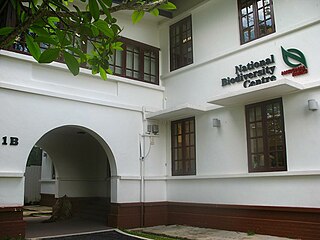
The National Biodiversity Centre is a branch of the National Parks Board and serves as Singapore’s one-stop centre for biodiversity-related information and activities. It manages all available information and data on biodiversity in Singapore. Diverse biodiversity-related information and data are currently generated, stored and updated by different organisations and individuals. The National Biodiversity Centre will maximize the usefulness of such information and data by linking them in a single meta-database. Having complete and up-to-date information is crucial for many decision-making processes involving biodiversity. This hub of biodiversity information and data at the National Biodiversity Centre will also allow knowledge gaps to be better identified and addressed.

Australia's National Reserve System (NRS) is a network of more than 10,000 Commonwealth plus state and territory protected areas which, in combination, on a national scale, protect more than 137 million hectares unique biodiversity and most significant ecological landscapes for future generations. The aim of the NRS is protect the diversity of all native landscapes, flora and fauna across Australia through strategic habitat protection.
Formed in 2000 and launched globally in 2005, the Alliance for Zero Extinction (AZE) comprises 100 non-governmental biodiversity conservation organizations working to prevent species extinctions by identifying and safeguarding sites where species evaluated to be Endangered or Critically Endangered under International Union for Conservation of Nature (IUCN) criteria only exist at one location on earth. AZE members work to rebuild populations of endangered and critically endangered species through efforts to eliminate human threats such as commercial exploitation, disease and the introduction of invasive species. AZE provides expertise on biodiversity goals for the Convention on Biological Diversity (CBD) and assists party nations in integrating protection of AZE sites and species into National Biodiversity Strategies and Action Plans (NBSAP). Country-based initiatives, or national Alliances for Zero Extinction, have begun to take shape recently representing partnerships of government agencies and non-government organizations to accelerate the protection of AZE sites in compliance with national commitments under the Convention on Biological Diversity.

Jervis Bay Marine Park is a marine protected area established by the Government of New South Wales in 1998. and the current zoning plan has been in place since 1 October 2002. The marine park is approximately 210 km2 (81 sq mi) in area and spans over 100 km (62 mi) of coastline from Kinghorn Point in the north to Sussex Inlet. The marine park is zoned to conserve biological diversity in marine habitats and to provide a range of recreational and commercial activities.
